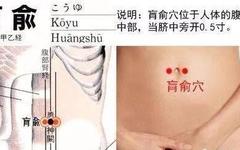If you have significant internal heat, it is recommended not to use moxibustion.
There are actually two types of diseases in the world: deficiency and stasis.
All the diseases I have seen can be summarized in two words: deficiency and stasis. Ultimately, all diseases can be summarized by these two terms. Of course, in today’s complex social environment, pure deficiency and stasis are rare; they are often mixed together. Chronic illness must lead to deficiency, chronic stasis must lead to deficiency, and chronic deficiency must lead to stasis. This is how it is. In acupuncture, it means one cannot be nourished, and the other is not flourishing.
There are many causes of stasis, including various pathological factors, internal generation of the five evils, emotional distress, external pathogens, and trauma, all of which can lead to stasis. This stasis in the brain, where blood vessels are blocked, is what modern medicine refers to as a cerebral infarction. Stasis in the cervical spine leads to insufficient local qi and blood supply, resulting in cervical spondylosis. Stasis in the heart, causing obstruction of the heart vessels, leads to coronary heart disease. Stasis in the lower back obstructs the channels, resulting in lower back pain. Even a cold can be attributed to wind and cold obstructing the pores and lungs, all of which fall under the category of stasis.
The foundation of the human body is qi, blood, yin, and yang, just like crops in the countryside need irrigation. This irrigation water is qi, blood, yin, and yang, which is the foundation of crops. The foundation of the human body must supply all organs, which requires pathways. These pathways can be meridians, collateral channels, the five zang organs, and various microscopic and macroscopic tissues. Just like the blood vessels, lymphatic system, and nerves dissected in modern medicine, they all fall within the scope of pathways.
In terms of crops, it is like the ditches at the edge of the fields. If the ditches are blocked with mud and sand, the degree of blockage affects how much water can flow downstream. If blocked completely, the crops below will not grow well, and over time, they will die. The human body is the same; if the pathways are blocked, some areas will not receive sufficient nourishment, leading to poor growth of local tissues. Once it reaches a certain level, it becomes a disease.
Therefore, to avoid illness, one must ensure that both aspects are addressed: sufficient qi, blood, yin, and yang, and unobstructed pathways. This leads to natural health.
Some may ask, what does this have to do with moxibustion? It has a lot to do with it. The method of using moxa sticks is simple and easy to replicate. As long as one knows some basic TCM knowledge, it can produce certain effects on the vast majority of diseases, as well as for health maintenance. What is the function of moxibustion? Everyone knows that moxibustion is warming; it is a warming supplement. Therefore, moxibustion is nourishing, and what can nourishment do? It can replenish deficiency and address insufficiencies. Thus, moxibustion can solve the foundational issues mentioned earlier. Secondly, moxibustion can also open up pathways. What does it mean to open up? It means that if the irrigation ditch beside the crops is blocked by garbage, opening it up means removing the garbage so that water can flow through. Therefore, it can clear stasis and ensure that pathways are unobstructed; where there is flow, there is no pain, and where there is pain, there is no flow.
Thus, moxibustion treats diseases by relying on its warming and opening properties, warming the deficient and clearing the stasis. By grasping deficiency and stasis, one grasps the root of disease. There is a saying: “When the righteous qi is present, evil cannot invade.” The purpose of moxibustion is to ensure that your righteous qi is sufficient so that evil, which belongs to the yin, cannot invade the human body. The mechanism of moxibustion can be described in six words: “yang transforms qi, yin takes form.” What does it mean that “yang transforms qi”? I liken it to the weather in southern China during March and April, when the plum rain is continuous and humid. At this time, people’s joints are easily invaded by damp evil, and a damp environment can easily breed bacteria. When the sun comes out, everything dissipates, and the environment becomes dry, making people’s joints feel comfortable. This is called “yang transforms qi.” Humans are born with yang qi; when yang qi is sufficient, it can eliminate the yin evils within the body.
What we advocate is to support yang, to strengthen yang qi and righteous qi. Yin takes form; tumors and phlegm produced within the body are all considered yin evils.
Moxibustion Secret 1: Use Pain as the Location, Use Symptoms as the Points
The method of treating diseases with moxibustion that I currently prefer involves four applications. These methods can be used individually, combined, or creatively applied.
The first method is to use pain as the location and symptoms as the points. This is equivalent to needling the ashi points; where there is a problem, treat there. For example, if there is discomfort in the cervical spine, and imaging shows cervical hyperplasia or compression, these can actually be ignored. In TCM, one must use TCM thinking. If one keeps remembering Western medical examinations, it will create many obstacles. In one word, many bone issues are actually related to the tissues attached to the bones; if the muscles are problematic, it is the muscles pulling on the bones. These organ issues are merely supply issues: one is deficient, qi and blood are insufficient, and the other is blocked, not flowing, and stagnant.
Do not worry; directly apply moxibustion to the local area. Initially, it is not advisable to apply moxibustion directly on the most painful spot (this is my personal experience), because that area is the most blocked. If you open it up there without opening the surrounding areas, that spot will still be stagnant water, still blocked. Therefore, I first use moxibustion on the surrounding areas that are not as blocked to warm and open them, and then you can moxibust the most painful point, and the active water will naturally flow out and become unblocked.
This is called giving the evil a way out. Of course, if after a period of moxibustion there is no effect, you can combine it with other methods, such as cupping or bloodletting in the local area after one or two weeks. This is called giving the evil a way out, with the premise of transforming the yin evil into something that can easily exit. Again, it is about “yang transforms qi, yin takes form.”
Moxibustion Secret 2: Ignite Multiple Points with High Heat
The second method is called igniting multiple points with high heat, which focuses on the acupoints along the Ren and Du meridians to fill the body with yang qi. This is actually a very good health-preserving method and an important method for treating internal diseases. All internal diseases, unless there is severe yin deficiency, can be tried by everyone. The specific operation involves several major acupoints along this meridian.
The first is the Guanyuan (CV4) acupoint, which is not an ordinary acupoint; it is the primary acupoint for warming yang and health preservation. I won’t elaborate on it here, as everyone knows. Guanyuan is particularly effective for women, as it is where the uterus is located. I use it to treat various gynecological disorders, especially for yin-formed uterine fibroids and adnexal cysts. Moxibustion here can gradually transform the yin evils inside. Currently, the most surprising application I have seen is with a twenty-year-old patient. I had her moxibust three moxa sticks side by side on Guanyuan. Originally, she had a cyst the size of an egg and had not menstruated for several years. Combined with the decoction I prescribed (Dang Gui, Ginger, Yimucao, Fuzi, and Shiqin Decoction), after half a month, all symptoms disappeared, her abdomen shrank by a circle, and the cyst reduced to the size of a pinky finger. Later, because she went to another place, she continued moxibustion for another month and called me to say she was pregnant.
The second acupoint is Shenque (CV8), which is an extremely important location, as it is the source of congenital energy. It is known that during fetal development, this location absorbs the congenital essence from the uterus. Moreover, I believe it is also one of the four gates. 0.5 inches beside it is the Huangshu (BL16), which is closely related to the Gao Huang. There is a saying that when a disease enters the Gao Huang, it is considered a place that is difficult to treat. There are many versions of this saying; some say it is outside the heart and inside the pericardium, where needles and medicine cannot reach. Others say it is deeply hidden within the body, containing congenital energy. Regardless of the version, it fully illustrates that Huangshu is an extremely important place. Furthermore, beside it is the Tianshu (ST25), the mu point of the large intestine, which can guide the large intestine and enhance the body’s ability to eliminate turbidity. It is a key acupoint for the ascending and descending needle method.
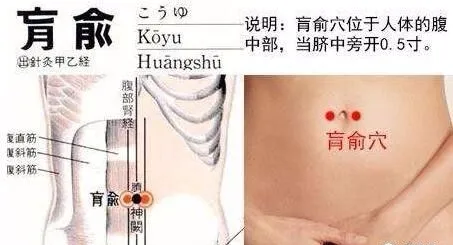
The third acupoint is Zhongwan (CV12), which governs the spleen and stomach. The spleen and stomach are the foundation of postnatal energy. The spleen and stomach belong to earth, and among the five elements, earth nourishes all. The reproduction of life in nature relies on the earth’s ability to nurture. Therefore, the spleen and stomach are where the postnatal qi, blood, yin, and yang are generated, and they cannot be neglected.
The fourth area is the sacrum, which has an inverted triangular shape. We have all learned physics; a triangle is the most stable shape. Every symbol given to us by the Creator has profound meaning. This triangular shape supports the entire spine, just like the primordial universe supporting the heavens. This shows the stability of this area. Teacher Yu Hao once said that it is the place where essence is stored, and the essence of a person emerges from this place. Therefore, moxibustion here can strengthen essence.
The fifth acupoint is Zhiyang (DU9), which corresponds to the heart. In nature, the heart is the sun, the sovereign fire, and in ancient times, it was said to be the king, with the people’s heart as the heart of the king. It is the great master of the five zang organs. Essence transforms into yang from this place. Moxibustion at this acupoint can enhance the supply of yang qi to the upper body. Then there is Dazhui (DU14), which is the meeting point of the seven yangs. Moxibustion here can invigorate yang qi. The textbook describes this acupoint’s usage primarily for draining, but I personally believe that regardless of wind-cold or wind-heat, it can be used for tonification. When yang qi is sufficient, the righteous qi naturally resides within, and evil cannot invade. Moreover, strengthening yang qi enhances the body’s ability to expel evil.
Next, the sixth acupoint is extremely crucial: the Huiyin (CV1) acupoint. The application of this acupoint has long been a secret in Taoism. It is the intersection of the Ren and Du meridians, and moxibustion here can directly communicate and adjust yin and yang. It can be said that the previous six acupoints lay the foundation for this acupoint. Once the previous positions are properly addressed and opened, moxibustion at Huiyin will be remarkable. For those with a cold and deficient constitution, they will immediately feel warmth throughout their body, and the cold will naturally dissipate. Countless cases have proven this point.
The seventh acupoint can be used in special circumstances, such as when there is heavy turbid yin in the brain and a deficiency of clear yang. This is the Baihui (DU20) acupoint. By leveraging the heat from the six acupoints below, moxibustion here can elevate the clear yang to the head. Thus, these seven acupoints form a unit, a formation, that is self-sustaining. I have used this to treat children with depression, using the herbal formula of Chao Pu, Yujin, and Niuxi, combined with moxibustion at Baihui, to directly clear the turbid yin inside and clarify the brain. Symptoms were resolved immediately.
There are also many patients with cerebrovascular diseases. Some believe that patients with strokes should not undergo moxibustion, as they already have hyperactive liver yang, which can easily aggravate symptoms. This issue must be assessed through pulse diagnosis. For those with hyperactive yang, I have follow-up methods, but many are due to turbid phlegm blocking the brain. I know a teacher who directly moxibusts Baihui for stroke patients to clear the internal yin evils, and the cerebral edema caused by bleeding resolves very quickly. For insomnia caused by insufficient clear yang, direct moxibustion at Baihui is incredibly effective.
After completing moxibustion at these acupoints, it is necessary to conclude with the Yongquan (KD1) acupoint. Moxibustion at Yongquan can draw down the fire generated by moxibustion. In the Hakka region of Jiangxi, there is a folk heating device called a fire cage, which has an outer layer made of bamboo and an inner ceramic pot. A thick layer of ash is sprinkled at the bottom of the pot, and burning charcoal is placed in the middle, covered with more ash. This way, the charcoal fire can last all day. Without the outer layer of ash, the fire would extinguish in one or two hours and would be very hot. However, after sprinkling ash, the heat becomes gentle.
I mention this in relation to using Yongquan because it draws down the turbid fire and enhances the ability to contain the fire. In summary, it transforms strong fire into mild fire, taking the essence of mild fire.
The direct effect of using this acupoint is to treat insomnia with remarkable efficacy. Many patients, I suggest, should moxibust for a few minutes before sleeping. Of course, if the moxibustion time is too long, it can excite the person. For the time of night when one should be quiet to nourish yin, excitement means that the qi, which should enter the interior, is instead brought outside, leading to excess heat. Moxibustion for 10-15 minutes is sufficient.
Another way to describe it is to strengthen fire and nourish qi. For those with poor sleep, it is worth trying to use moxa sticks for about five minutes, moxibust one side, and then alternate. In the hospital where I work, an acupuncture teacher has used this method for over a decade, and it was the first time he was late for work, which shows the power of Yongquan. Moreover, Yongquan is the root of the kidney’s congenital essence, and moxibustion here naturally creates an ascending and descending effect.
These eight acupoints can be split, combined, and used in conjunction with the first method. The principle is this, but the method is not fixed; it depends on what feels comfortable and effective.
Moxibustion Secret 3: Treat Above for Below
The third method is to treat above for below, which symbolizes drawing fire back to the source, returning yang to yin, and descending turbid yin. A common example is insomnia. At night, we should be quiet; the body’s rhythm tells us that this is the time to rest, allowing yang qi to enter the interior and return to yin. There is a saying: “When still, all is yin.” When a person is still, it is like a water pool after rain, where the water begins to clear from being turbid, and the silt settles to the bottom, leaving clear water in the pool. This is due to stillness. Therefore, to improve sleep, one must be still; if one cannot be still, then through methods, one can let yang return to the interior, to the source, to yin, allowing the spirit to be like a clear water pool.
How to do this effectively? A very effective method is to moxibust the Yongquan acupoint. Why choose this acupoint? Because it is the lowest point and the root of the kidney, as well as the root of the person. Moxibustion here, from a spatial perspective, can draw fire downwards, reducing the turbid energy in the head. This way, the spirit becomes clear, and insomnia naturally improves. Additionally, when you moxibust that area, the spirit will focus on that place, and where the intention is, qi and blood will concentrate. This is the essence transforming into qi, and qi transforming into spirit. The simplest example is when you get angry, your face turns red because qi and blood rise.
Therefore, when moxibusting, one must concentrate, which reduces distracting thoughts. Excessive thinking is a major factor in insomnia. To combat excessive thinking, one must focus on doing things, becoming absorbed in the task at hand. When moxibusting that area, the sensation produced will naturally draw our intention to the moxibustion site, allowing the body’s instinctive qi and blood to flow there.
I once treated a patient with insomnia who was very troubled. His pulse was overflowing at the cun position, and the Guan pulse was full, while the Chi pulse was weak. At a glance, he was a very astute person, good at calculations. At that time, I had him moxibust Yongquan, and I told him to moxibust it again at night. He would feel something coming out of that acupoint during the night, but I kept it vague.
The next day, he came to see me, looking refreshed. Upon seeing me, he asked if he had noticed anything coming out the night before. I told him to sit down, and I checked his pulse. The overflowing pulse was gone, and the Guan pulse was much softer. I asked him if he still felt chest tightness, and he said he felt clear and light in his chest. I asked him how he slept, and he suddenly realized that he hadn’t felt this relaxed in years. This was simply the spirit being able to control the essence and qi.
Additionally, in my previous writing on the ascending and descending needle method, for those with poor intestinal function and blocked bowel qi, using the six descending acupoints, primarily focusing on the lower acupoints, moxibustion can draw the turbid fire downwards. When combined with concentration, qi and blood can be fully drawn down, which has good effects on internal diseases.
In traditional times, there was a leader with nephritis. When untreated, he would see bubbles in his urine daily, with three plus signs for protein, and often felt dizzy. He had poor sleep. I used the six descending acupoints for moxibustion. The next day, he could visibly see a significant reduction in bubbles, and his dizziness improved, along with better rest.
It is worth mentioning a specific acupoint: Taixi (KD3). This acupoint naturally regulates ascending and descending. Moxibustion here can elevate kidney water while also descending turbid energy. This acupoint is often used for diabetes, especially for those with significant yin deficiency symptoms. Some may think that yin deficiency is not suitable for moxibustion. If it is true yin deficiency, then moxibustion is indeed inappropriate. However, if it is merely yin deficiency, moxibustion can be combined with decoctions to achieve the effect of seeking yin within yang. In clinical practice, true yin deficiency is rare; most cases are due to stasis, which blocks the pathways of yin flowing throughout the body. At this time, one can boldly use moxibustion at Taixi.
Similarly, Chengshan (BL57) is also significant. Have you noticed that when we cramp, it is often in the calves? Why? Because cold rises from the feet. This area is prone to accumulate cold energy. When cold condenses below, the muscles shorten. Moreover, dysmenorrhea and cold in the uterus often have knots and accumulations in this area. I have palpated many painful spots here. Therefore, moxibustion at this location can transform the cold energy in the abdomen. Many uterine fibroids, amenorrhea, cysts, and even infertility can be addressed from here.
This is similar to the lumbar region, as both bear the weight of the upper body and belong to the foot taiyang meridian. I have also used it to treat cold-type lower back pain. Many times, moxibustion here can warm the entire lower back and abdomen. Chengshan bears the weight of the mountain, indicating that this location is a crucial area for moxibustion.
Moxibustion Secret 4: Treat Below from Above
The fourth method is to treat below from above. The essence of this method is to allow clear yang to rise and be elevated. This is particularly suitable for conditions of sinking middle qi. The pulse can generally be seen as insufficient at the cun position, with the Guan and Chi pulses showing signs of sinking. This method only involves one acupoint: Baihui (DU20). This acupoint is where all yang qi converges.
Under normal circumstances, much yang qi disperses from this location. Therefore, sealing the Baihui acupoint is a good treatment method for those with insufficient yang qi. For example, people with allergic rhinitis often have insufficient yang qi. Moxibustion at this acupoint can replenish yang qi, significantly alleviating symptoms.
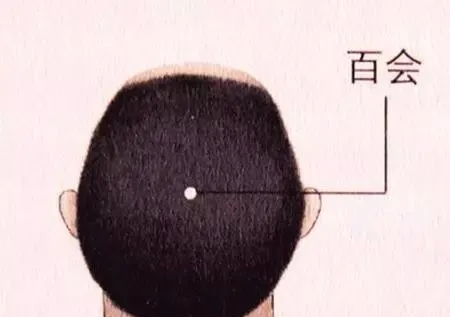
You can also try this: wearing a hat can cause one to sweat profusely. Wearing a hat is actually a way to nourish yang qi, especially at night when sleeping. When you put it on, yang qi disperses more slowly, and the longer you wear it, the more yang qi accumulates. For those with allergic rhinitis, asthma, or wind-cold colds with clear nasal discharge, which are symptoms of yang deficiency, covering the Baihui acupoint will significantly reduce symptoms the next day. I have personally experienced this; sometimes when I am exposed to wind and cold, my nose gets congested. Although I do not catch a cold, I can feel the sensation of lung qi not being expressed.
At night, if I wrap my head in clothing, I can relieve the symptoms in a short time. Repeating this several times can prevent wind and cold. Moreover, Baihui is also a key acupoint for returning yang. For those who faint easily or are excessively drunk, moxibustion at Baihui is a powerful remedy. Once, while in the graduate dormitory, a senior brother drank too much at a gathering. He was not good with alcohol and had to drink a lot due to social pressure. When he returned, he lay on the ground. We prepared a basin for him to vomit, and after vomiting, he still continued to throw up. Later, we used this method, moxibusting Baihui with a moxa stick, and it finally stopped.
In clinical practice, for women with menorrhagia, one would typically use the Yinbai (SP1) acupoint, as it can regulate blood. However, there is an even better acupoint: Baihui. Moxibustion at Baihui can enhance the upward lifting power of yang qi, helping to retain blood. Treating below from above is applicable for conditions that require strengthening the upward lifting power of yang qi. Other times, this method is used less frequently because the fire nature rises, and the body’s rhythm is to let fire sink down. Therefore, non-sinking diseases rarely use this method, which is why I mentioned earlier that after moxibustion at Baihui, it is necessary to use Yongquan to contain its fiery nature. This is simply the application of the principle of harmony.
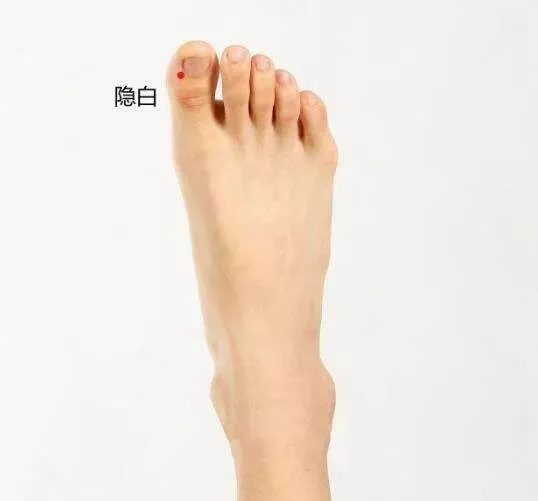
Less fire nourishes qi, strong fire consumes qi.
The principle of moxibustion is to follow the eight words: less fire nourishes qi, strong fire consumes qi. Many people believe that moxibustion can cure all diseases and excessively apply moxibustion. Afterward, they find themselves feeling fatigued, and their bodies are worse than before. This situation is very common. In clinical practice, I have also experienced that it is not about vigorous moxibustion that is effective. Everything has a limit.
Less fire nourishes qi means that if the moxibustion time is appropriate, the body will feel very comfortable, just like when we practice Tai Chi or jog; the body feels great. Strong fire consumes qi means that if moxibustion is too vigorous, one will find that qi is consumed excessively, just like running fast. In the end, the body does not benefit from the exercise but rather injures qi. Therefore, moxibustion must be done with a sense of moderation, with comfort as the standard. Moreover, everyone’s threshold is different, and one needs to experiment slowly to find their own threshold, just like when taking herbal medicine, starting with a safe small amount and gradually testing where their limit lies. Of course, in certain acute cases, such as menorrhagia or severe cases, exceptions apply.
Less fire nourishes qi, strong fire consumes qi; under the same conditions of moxibustion’s warming and opening power, it depends on the duration of moxibustion. Personally, I rarely moxibust a single acupoint for more than half an hour; most of the time, it is around ten minutes, and sometimes even five or six minutes. The normal duration is about ten minutes, which is controlled by oneself. The books also mention that the degree of redness is the standard. Going beyond this can be harmful.
When is the best time for moxibustion?
The plan for the day is in the morning, which is also when yang qi begins to grow and strengthen, transitioning from yin to yang. At this time, moxibustion is most suitable for nourishing yang qi in the body. Therefore, reasonable exercise should also occur at this time, as movement generates yang. In the morning, it is essential to get the qi and blood flowing. Moxibustion at this time can align with the activities of heaven and earth, and the movement of qi and blood in the body, making the effort more effective. In the afternoon, yang qi begins to enter the interior, transitioning from yang within yin, and even after entering, it becomes yin within yin. The body should be still, as stillness preserves all yin.
Being excited and active at this time goes against the natural rhythm. Being excited at night easily leads to excess heat, which is why at night, qi and blood should enter the interior and be stored deeply. If you do not strengthen this, it is fine, but if you obstruct this natural tendency, yin will first be insufficiently nourished, and yang qi will overflow. At this time, the physiological rhythm of the body is to enter the interior; if you bring out yang qi, it becomes excessive, and excess qi leads to fire. This is going against the natural order. Therefore, it is said that moxibustion at night can be very harmful.
Of course, it is not that moxibustion cannot be done; lower acupoints can be moxibusted. For example, Yongquan can draw fire downwards and bring yang into yin. However, this method must also adhere to the principles of less fire nourishing qi and strong fire consuming qi. If the degree is not well controlled, it will lead to excessive fire. Therefore, at night, it is advisable to be still and avoid excessive thinking. If you think too much, qi and blood will be in the head, which is also going against the natural order.
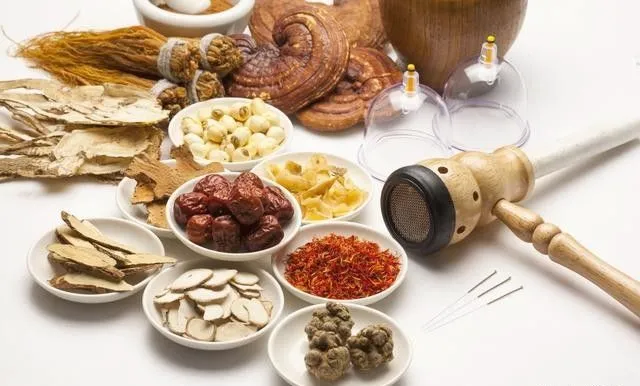
Precautions for Moxibustion!
Having discussed so much about moxibustion methods and precautions, let’s talk about situations where moxibustion is not suitable. It can be based on the requirements for acupuncture. Situations like excessive drunkenness, overeating, or extreme hunger are not suitable for moxibustion. Moxibustion relies on fire to achieve warming and opening, emphasizing less fire nourishing qi and strong fire consuming qi. Therefore, the degree of heat is crucial; the body has a foundation and a tolerance level. If exceeded, it can cause harm. It can injure qi and yin. True yin deficiency is not suitable for moxibustion; yin deficiency means yin deficiency. Why do I add the word true?
Many of the symptoms we see as yin deficiency actually have moisture involved. The spleen governs the ascending of clear qi. If the spleen is deficient and cannot ascend the clear, it leads to insufficient fluids in the upper and lower jiao. If the spleen is deficient and cannot ascend, those fluids will block in the middle jiao, eventually becoming damp. This situation can also lead to symptoms such as dry skin, dry mouth, dry lips, and dry eyes. It appears to be yin deficiency, but in reality, it is due to the spleen not ascending the clear.
Another situation is when the spleen ascends the clear normally, but the pathways for ascending the clear are blocked, leading to similar outcomes. If these two situations are treated as yin deficiency, it would be counterproductive and reverse the treatment.
I have encountered such cases, including treating diabetes patients. In TCM, diabetes is referred to as “Xiaoke,” which is believed to be due to fire and yin deficiency. Modern medicine and TCM texts suggest that many herbs that nourish yin can lower blood sugar, such as Yuzhu, Maidong, and Tianhuafen.
One patient was treated by a very skilled senior practitioner using these herbs combined with his methods for diabetes. Seven out of ten patients improved significantly, with their indicators dropping. However, three patients experienced worsening symptoms, with increased dryness in the mouth, greater weight loss, and more severe deficiency. They would eat corn and excrete corn, and their blood sugar levels did not decrease but rather increased. Fortunately, this patient eventually came to me. I prefer to use the moxibustion approach, so I diagnosed it as spleen deficiency and prescribed Huangqi Jianzhong Decoction with modifications, including fifty grams of maltose. I can imagine that at this point, everyone might want to criticize me.
Giving sugar to a diabetes patient in a large hospital could be considered a medical accident, and I could easily lose my job. Moreover, I did not restrict his diet; I only advised him to eat less of hard-to-digest cold fruits and avoid alcohol. Then, I used the second moxibustion method. Being young, I was cautious with the herbs, so I prescribed three doses at a time. The next day, the patient called me, saying his mouth was no longer dry, he had saliva, and his appetite had improved. I asked him to come back for a follow-up after finishing the three doses.
After seven doses, his blood sugar dropped by two units, and urine sugar disappeared. Later, I continued to treat him with Huangqi Jianzhong Decoction and Fuzi Lizhong Pill, without any yin-nourishing herbs. After half a month, he had morning erections for the first time in two years, lost over thirty pounds, and all symptoms disappeared.
This patient had great faith in TCM; he was young, around forty, and despite his high blood sugar, he did not take Western medicine. His blood sugar levels went from fifteen after meals to eight, and then to normal. I cannot claim that I cured this disease; I can only say that my treatment was effective. The only replicable treasure in TCM is the principle of syndrome differentiation and treatment. Therefore, this case is for reference only and should not be replicated casually.
At this point, I would like to share a personal opinion: when using TCM thinking to treat diseases, one can boldly forget Western medical diagnoses; otherwise, it becomes an obstacle. Using Western medical thinking to guide medication and acupuncture, is that still TCM? It is like trying to drive a motorcycle with the mindset of driving a four-wheeled vehicle; it probably doesn’t work that way. Furthermore, this experience with diabetes has made me appreciate the charm of classical formulas and has led me to explore classical formulas.
That was a digression; let’s return to the main topic. The Inner Canon states, “For the minor, treat with sweet herbs.” Every treatment method has its strengths and weaknesses. We can strive for excellence, but in critical situations, we should choose the method that is most beneficial to the condition. When a person is in a state of great deficiency, whether through acupuncture or moxibustion, it should be used cautiously. Just like when a person is hungry, ginseng or moxibustion is not appropriate; a bowl of plain porridge is the best remedy.
Therefore, in cases of great deficiency, we can treat with sweet herbs. What are sweet herbs? They can be medicinal foods or warming and lightly nourishing herbal soups. Because neither acupuncture nor moxibustion can generate energy from nothing. Our energy foundation comes from the postnatal spleen and stomach, which absorbs energy.
The principles of moxibustion must also follow a strategy of surrounding and blocking. I once spoke with a well-known local TCM doctor who is very fond of using Chaihu Guizhi Decoction for treating colds. In treating colds, 90% of patients use this formula with modifications. It can be considered a well-known formula. This formula comes from the medical sage Zhang Zhongjing, who taught that when there is liver disease, it is important to strengthen the spleen. When seeing Chaihu Guizhi Decoction, I can only share my shallow insights as I have just started learning about classical formulas; please do not laugh at me. I think of the medical sage’s teachings about the six meridians and the transmission of diseases.
When we catch a cold, whether it is wind-cold or wind-heat, it invades through the Taiyang meridian first, as the Taiyang is the body’s first line of defense against evils. Just like the border of our country, when enemy troops invade, the border is the first stop. If the Taiyang is invaded and the righteous qi is weak, the evil continues to invade, progressing to the Shaoyang. The Shaoyang is like the nearest military base to the border. This Chaihu Guizhi Decoction, when administered, strengthens the Shaoyang, preventing the evil from advancing. Additionally, it contains Guizhi, which is specifically for the Taiyang.
This formula, when applied, is equivalent to directly strengthening the Shaoyang, preventing the evil from advancing. When the border guards engage with the invading enemy, the only outcome for the enemy is to be defeated or retreat. Therefore, Chaihu Guizhi Decoction is particularly effective for colds. This gives us an insight: whether using needles or moxibustion, we should prevent the evil from advancing even an inch. The Inner Canon mentions treating bi syndrome by needling in front of the initial symptoms, then needling behind, surrounding the evil, and advancing step by step.
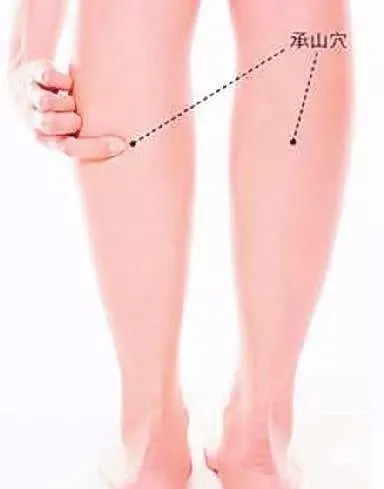
For example, when cold rises from the feet, many lower limb issues are related to cold. We often cramp in the calves, which Western medicine calls the gastrocnemius. Because there is an acupoint called Chengshan. Friends who do not believe can try this: expose your calves to cold air while sleeping, and those with insufficient yang qi are very likely to cramp.
Moreover, cold has a characteristic: it starts at the feet and gradually rises to the calves and knees, eventually reaching the spine. There is a saying that cold reaches the spine. Therefore, in such cases, one can directly strengthen yang qi above the cold area with moxibustion, and also moxibust the area below. This can be done at the entry and exit points of the meridians.
推荐阅读:●Continuous moxibustion for 5 hours, using 20 moxa sticks, cured my foot injury in one session.●After moxibustion for my mother with late-stage liver cancer, she improved significantly after a year, and the doctor was amazed at the miracle.●The formula for “toothpaste” from the Qing Dynasty.
Long press to identify
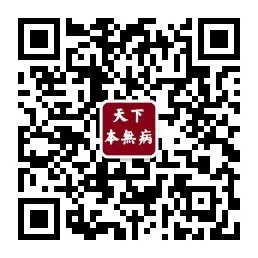
Follow us
(For inquiries, submissions, copyright, etc., please contact WeChat: 13810949871)

